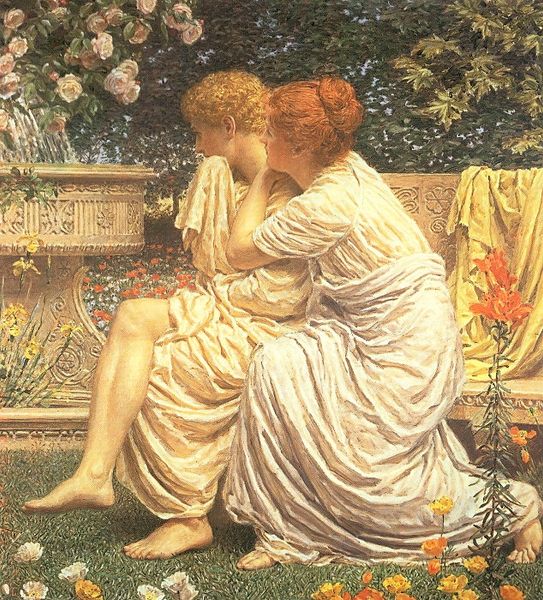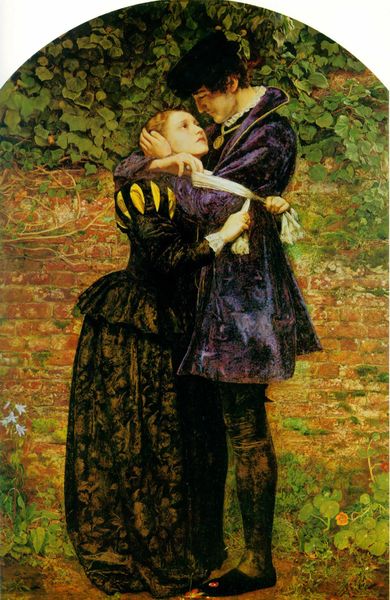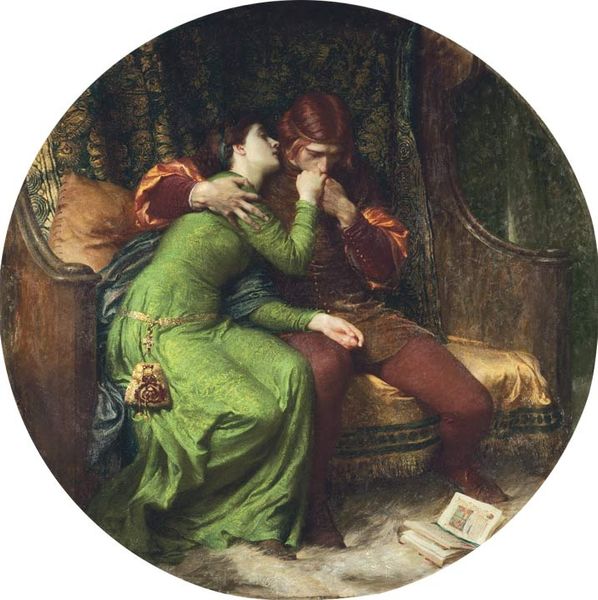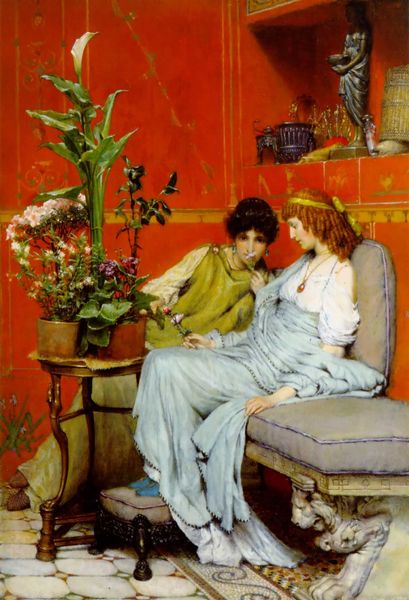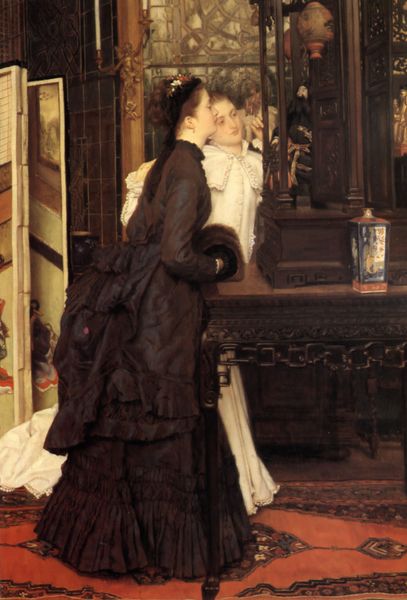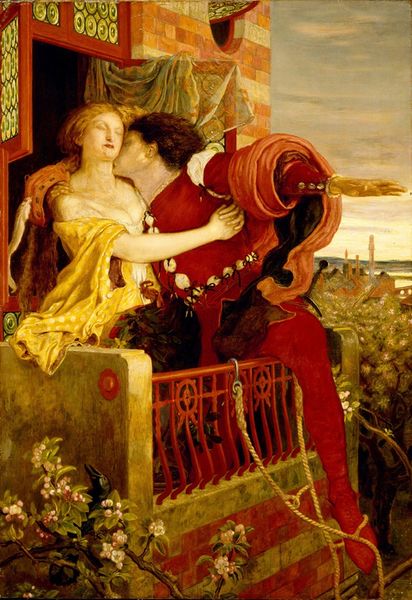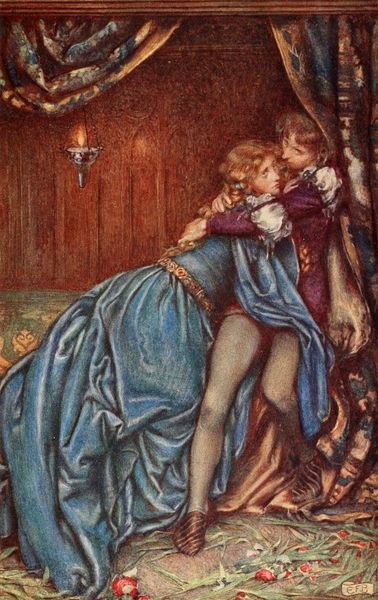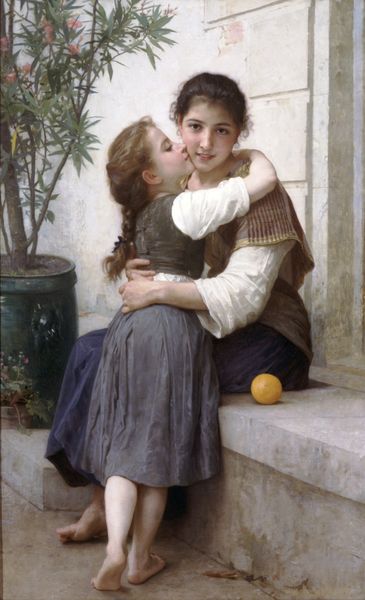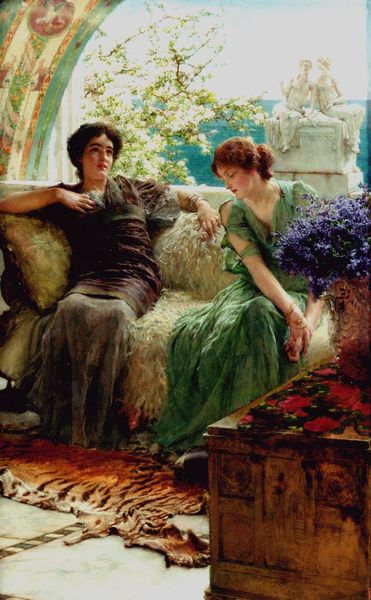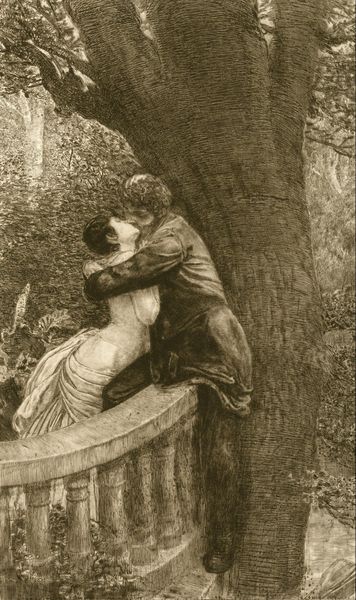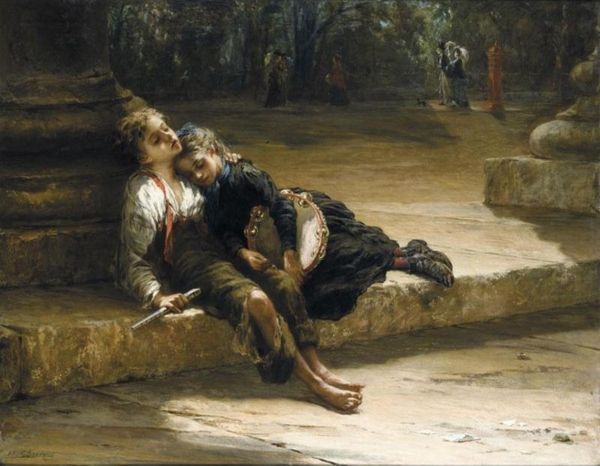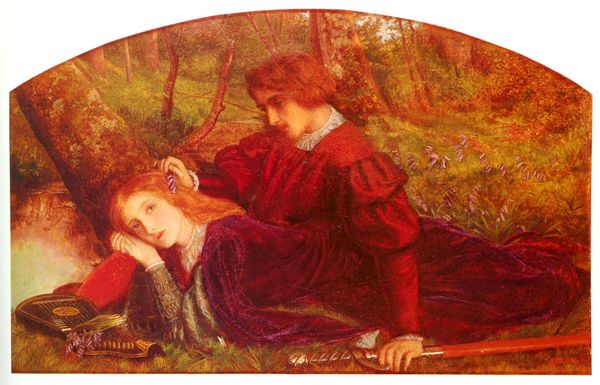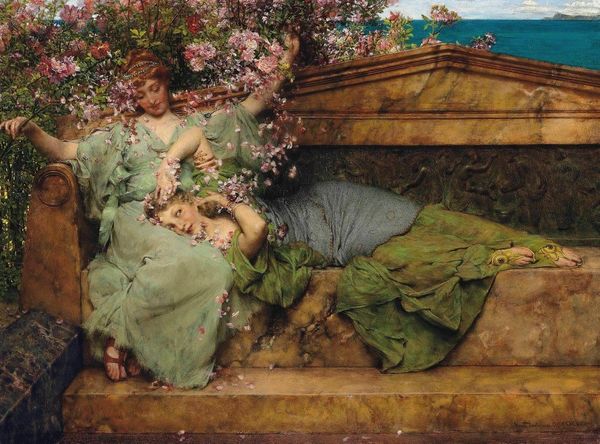
Copyright: Public domain
Curator: Edward Burne-Jones painted “Love Among the Ruins” in 1894 using oil and tempera on canvas. The piece very much embodies the Pre-Raphaelite movement to which Burne-Jones belonged. Editor: My initial reaction is one of somber beauty. The figures, draped in heavy, rich fabrics, huddle amidst what seems to be the remnants of a grand, but now dilapidated structure. There's an overwhelming sense of loss, but also, paradoxically, intimacy. Curator: Indeed, the ruin becomes a kind of stage, a very self-conscious nod to the ruin as a popular trope in Victorian painting—reflecting on themes of faded glory and the transient nature of human achievement. But Burne-Jones gives it a more melancholic interpretation, consistent with aestheticism. Editor: Absolutely. The roses climbing through the stone—they speak to me of resilience, even as the physical structures crumble. Are they an assertion of nature's power, perhaps suggesting that love, too, persists despite historical decay? This could be a loaded and purposeful juxtaposition. Curator: Precisely. Roses frequently symbolized love and beauty. The ruined building would perhaps speak to industrial blight. Burne-Jones's landscapes weren't always just pretty pictures; they reflected concern regarding urban change and environmental problems that emerged during the industrial revolution in England. Editor: That’s a fantastic point. This makes the tender embrace between the figures all the more significant. It seems as though they’re sheltering not just themselves, but a vital, human connection from forces that seek to erase it, whatever the cost. Curator: And consider also that Burne-Jones was active within socialist circles at this time. Some readings even interpret the figures as embodying, respectively, a dedication to aesthetic appreciation on one hand, and a devotion to ethical action on the other. Their entwined hands suggest these values may depend on each other to persevere. Editor: It enriches the work further, making it so much more than just another romance. Knowing that layers of possible readings resonate, even in ruins, leaves me optimistic. Thank you for providing so much vital context. Curator: My pleasure. And to contemplate love in light of historical flux feels essential as we look to an unknown future from within our current state of perpetual cultural shift.
Comments
No comments
Be the first to comment and join the conversation on the ultimate creative platform.
